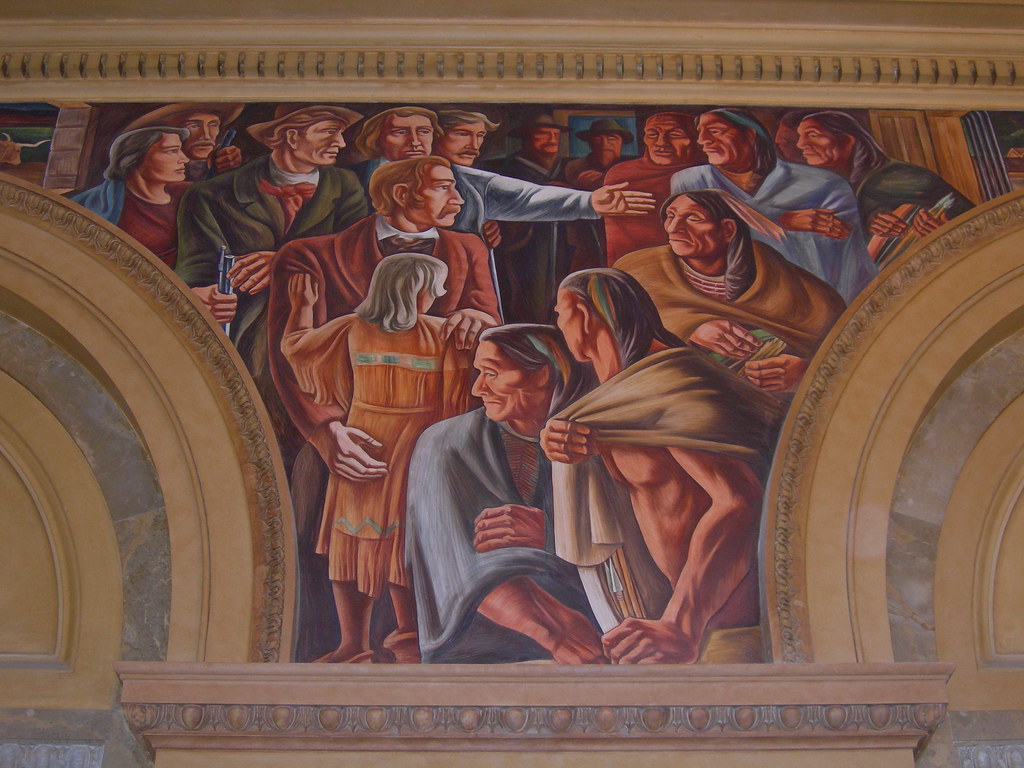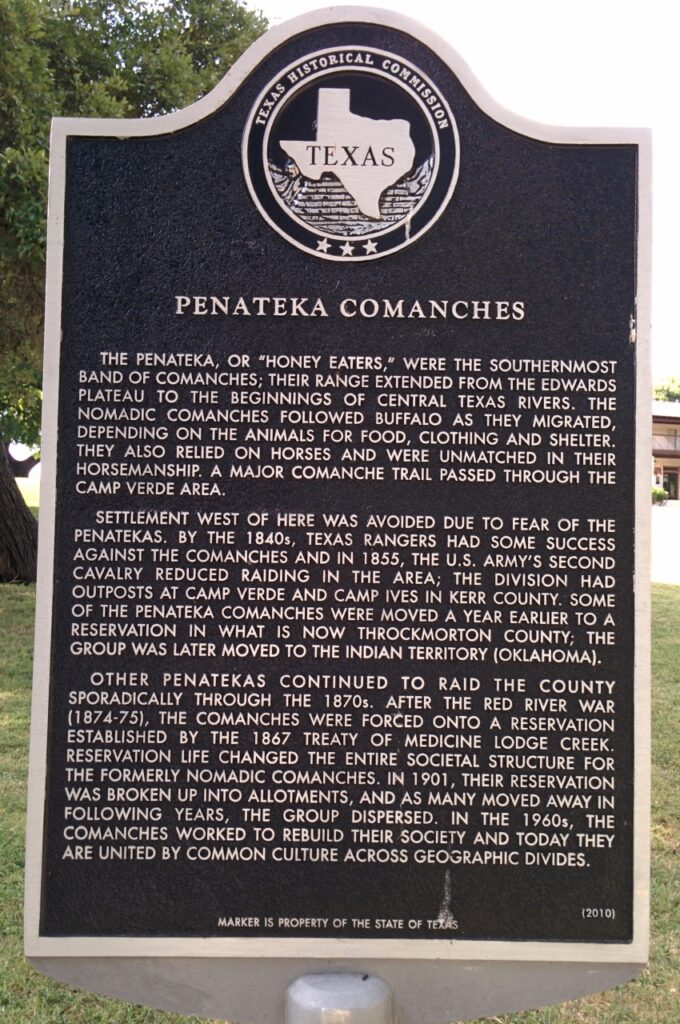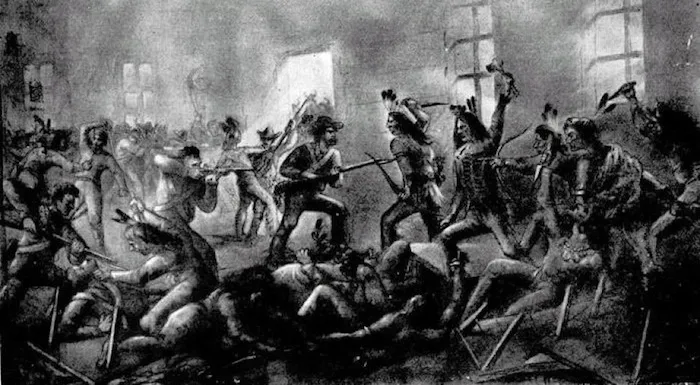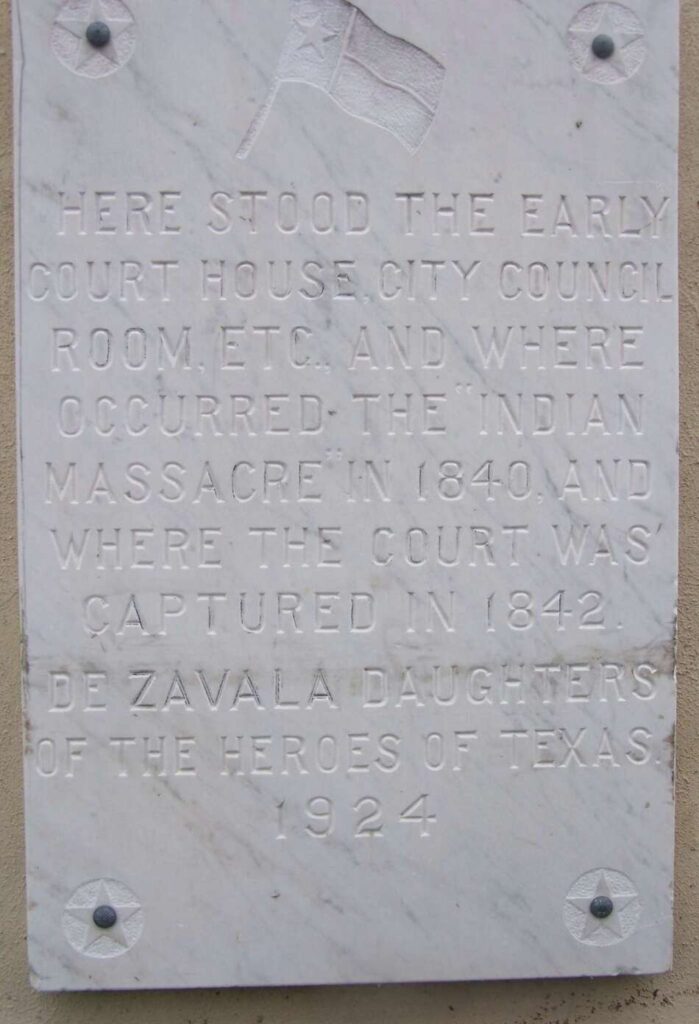#OTD on March 19, 1840, Texas Rangers and militiamen killed thirty-five and imprisoned thirty Penateka Comanche people during a Council House meeting in San Antonio, TX while negotiating captives with commissioners of the Texas government.

The Comanche people were not a unified nation but consisted of affiliaetd bands. Penatekas were the southernmost, occupying land from the Edwards Plateau to the headwaters of Central Texas rivers. They were central actors in the the Texas Republic and later U.S. expansion.

In his 1836-8 presidential term, Sam Houston sought to establish peace though commerce with Comanche bands. His Peace Commissioners negotiated a treaty with Penateka leaders Muguara, Muetstyah, and Muhy, but it was never ratified by the Texas Senate. https://www.tshaonline.org/handbook/entries/houston-sam
Mirabeau Lamar, who succeeded Houston, rejected the peace policy and hoped to expel Indians from Texas altogether. Penatekas struggled with attacks from Texas Rangers, several smallpox epidemics, and fear of Cheyenne and Arapaho. They were ready to strike a deal. Comanche peace representatives arrived in San Antonio in January 1840. The Texas government demanded that Penatekas return all captives, abandon Central Texas, and avoid white settlements. Lamar persuaded Chief Muguara to visit San Antonio on March 19, 1840. Muguara arrived with thirty-three chiefs and warriors, thirty-two women and children, and white captive Matilda Lockhart. Upon arrival, three companies of Texas Rangers surrounded the Council House.
Lockhart bore the marks of severe torture – bruises and a deformed nose – and indicated that fifteen other captives were still with the Comanche and that the leaders intended to ransom them. This angered San Antonio residents and Texas authorities.

From San Antonio Report.
The Texan commissioners demanded the release of the other captives Lockhart mentioned, but Muguara explained that he was unable to because they were with a different band than his. He requested trade goods for the ransom of the White captives held by the other tribes. The Texas Rangers and militiamen entered the Council house and informed the peace chiefs that they were being held hostage until all captives were released. The chiefs attempted to escape and called for others outside for help. Fighting erupted. Chief Muguara was shot several times. Thirty-four other Penatekas and seven Whites were dead. Twenty-seven women and children and two elders were taken prisoner. The other Penateka women were enslaved to wealthy families.

The Comanches declared war after some of the captives were tortured to death. In August 1840, the Penateka leader, Puchanaquarhip (Buffalo Hump), attacked Victoria and Linville with nearly 500 warriors, taking livestock and captives. https://www.tshaonline.org/handbook/entries/linnville-raid-of-1840
On August 12, Texas Rangers killed about fifty Penateka in the battle of Plum Creek. Later in October Texas Rangers under the command of John H Moore traveled up the Colorado river and destroyed a Comanche village on the Red Fork. https://www.tshaonline.org/handbook/entries/plum-creek-battle-of
The resulting war was a stalemate. The Republic of Texas could not expel or exterminate Comanches, as it had Cherokees, and Texans so feared Comanche power that they all but abandoned Austin for several years.
The Council House was torn down in 1850 due to urban development. The original building was on the east side of the Main Plaza. In 1924, the De Zavala Daughters of the Heroes of Texas placed a commemorative marker on the northwest corner of a building on top of the original site.

This thread is a part of the #OTD in Ranger history campaign that @Refusing2Forget is running this year. Follow this twitter handle or https://refusingtoforget.org/ranger-bicentennial-project/, and visit our website https://refusingtoforget.org to learn more.
The key source for this thread is https://www.tshaonline.org/handbook/entries/comanche-indians and “Texas Indian Holocaust and Survival: McAllen Grace Brethren Church v. Salazar” by Milo Colton’s
Refusing to Forget members are @ccarmonawriter @carmona2208 @acerift @soniahistoria @BenjaminHJohns1 @LeahLochoa @MonicaMnzMtz and @Alacranita, another co-founder is @GonzalesT956
@emmpask @sdcroll @HistoryBrian @LorienTinuviel @hangryhistorian, @ddsanchez432! , Brent Campney, Jeffrey Littlejohn, and Miguel Levario are other scholars working on this project.
